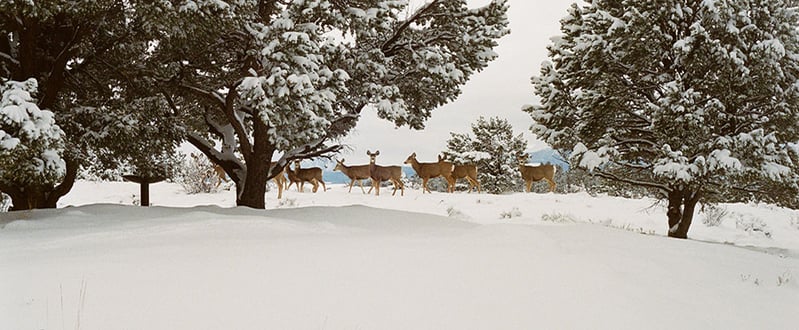
Deer damage is estimated to cost around $2 BILLION dollars nationwide each year, and $250 million of that cost reflects damage to properties around homes in communities like ours. It’s important to know the signs of deer damage, so you can choose proactive, natural deer pest control steps that protect your property and landscaping investments, without being unsafe for your family or pets.
Deer eat. Some might say it’s what they do best!
Deer damage around the home occurs most often in late winter and early spring. During this time, deer run low on other food supplies and begin to look near our homes, eating flowers, fruits, vegetables, fruit trees, and ornamental shrubs.
Signs of deer damage:
- Damage to leaves and foliage: If the damage is clean cut then it is most likely a smaller animal such as a rabbit or rodent. If the damage looks ripped or jagged then you know a deer has been snacking. Also if there are any bare branches with the leaves missing it usually means deer.
- Height of the damage from the ground: Deer feed up to 6ft high, this is a great way to rule out smaller mammals.
- Deer droppings: This is a very distinguishable sign that deer have been on your property. The dropping look like moist black beans or round pellets.
- Deer tracks: Deer footprints show two toed markings in the form of an upside-down heart.
Use these safe, natural solutions:
- Plant deer resistant plants around your property, like black cohosh, wild columbine and New England aster, and consider fewer plants that deer do like to eat.
- Put up a fence; a very effective solution, but likely the most costly.
- Apply all-natural deer repellents on deer favored plants. Pure Solutions' deer repellent program deter deer from feeding on your property, and is best if used before or at first sight of deer damage, preventing deer herds from creating a habitual feeding pattern.
Other benefits of deer control:
Deer are common hosts of adult black-legged ticks, also known as deer ticks, and studies have found that the amount of ticks in an area is correlated with the density of deer. Without deer proofing, these ticks can then be carried to your property, bringing the risk of spreading harmful diseases such as Lyme disease and babesiosis, among others.
Contact us, or click below for more information on how these issues can be mitigated, safely and naturally, on your lawn:
Safe and happy outdooring!
Sources: Cornell University Suburban Whitetail Mangement of Northern Virginia


